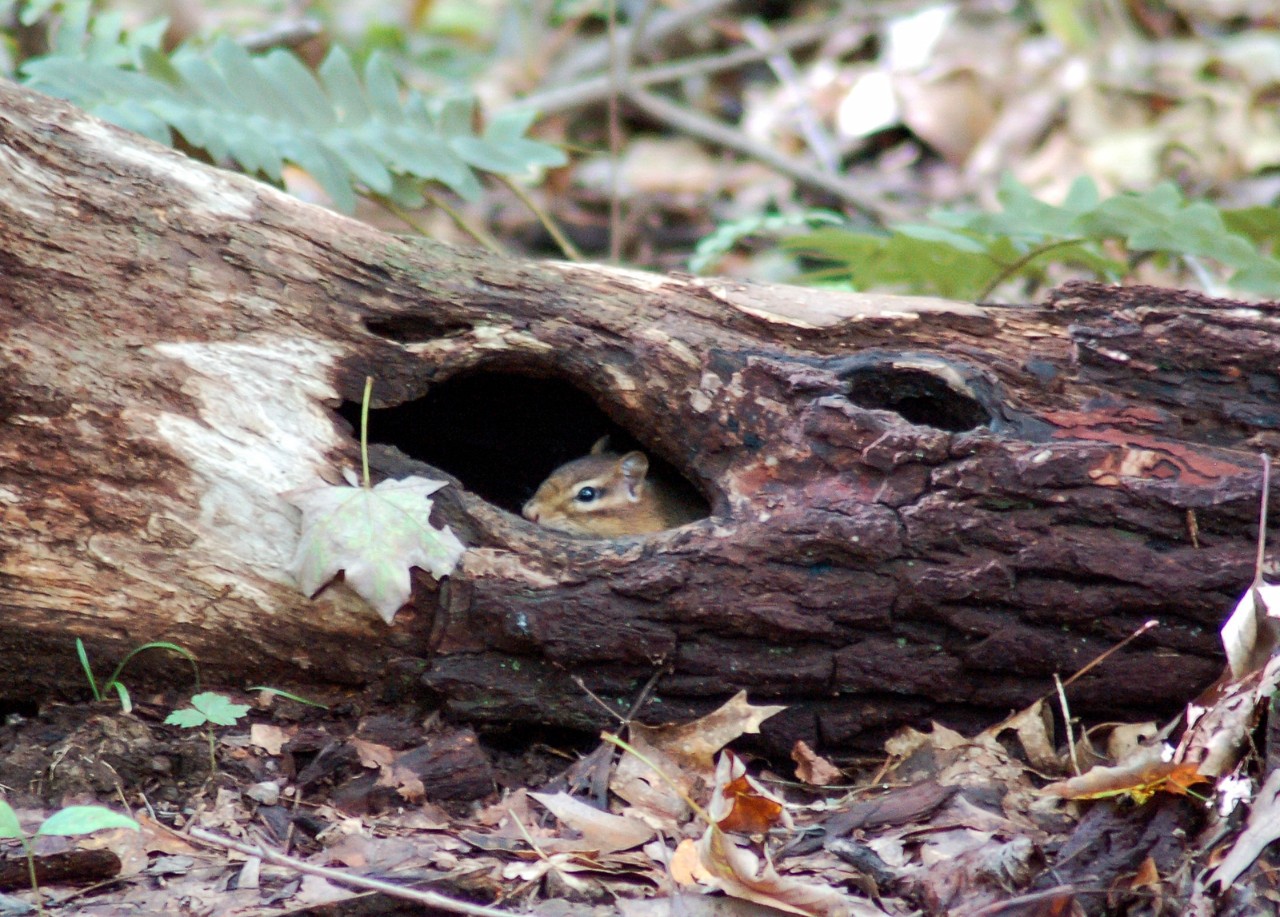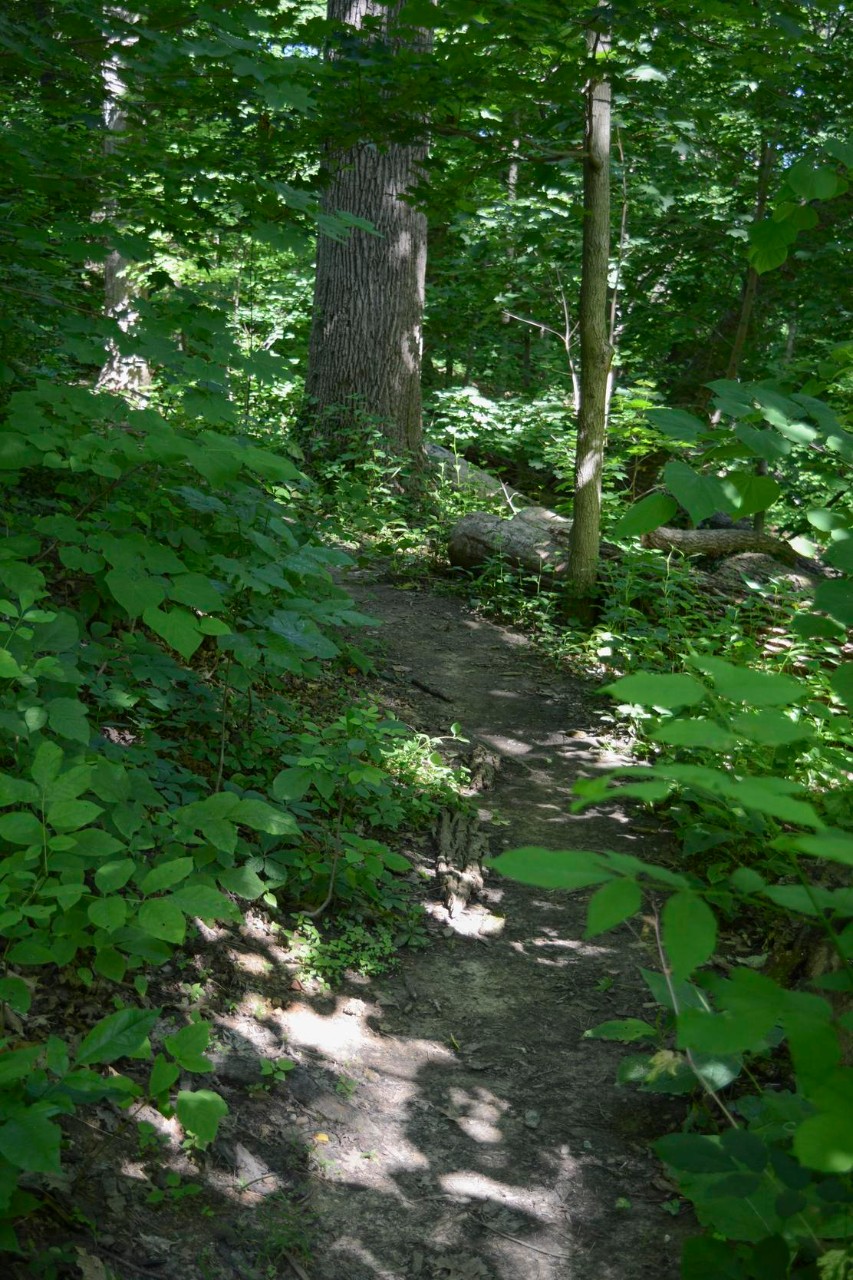
WVXU: What are those dents in the forest?
UC geologist explains why some Cincinnati parks have such bumpy terrain
WVXU turned to a University of Cincinnati geologist to answer a reader question about why many parks in southwest Ohio have hilly moguls like you might see on a BMX course.
Jane Goode of Harrison asked in particular about the Badlands Trail at Miami Whitewater Forest, which features hills and depressions in an oak forest.
“I see a lot of chipmunks coming around and that brings me a lot of joy,” Great Parks of Hamilton County interpreter Jack Fogle told WVXU.

Many trails in southwest Ohio have little hills and depressions in the woods. UC geologist Dylan Ward said often they're caused by sinkholes in the limestone. Photo/Lisa Britton/UC
But why is the trail so bumpy like someone threw a rumpled quilt over an unmade bed?
UC College of Arts and Sciences Associate Professor Dylan Ward said Ohio's geology is to blame.
“Those formed by rainwater trickling through the limestone. Rainwater is slightly acidic, naturally,” Ward told WVXU. “That dissolves the calcium carbonate mineral in the limestone and it creates voids.”
The voids cause the ground to sag and droop in these areas over thousands of years, Ward said.
Miami Whitewater Forest is home to UC’s Center for Field Studies, a former farm that has classrooms and gives students a chance to do research on topics such as the monarch butterfly migration.
While investigating WVXU's question, Ward grew curious about the abundance of steep gullies found in the park. So he examined digital contour maps of the area’s hills and valleys created using light detecting and ranging, which bounces a laser from an airplane over the ground to map the terrain.
This part of Ohio was covered by ice sheets that dumped sediment onto the limestone and shale bedrock thousands of years ago. But that doesn't explain why the park has so many gullies, steep ravines that you sometimes see at the edges of creeks, Ward told WVXU.
Ward said he suspects the park was clearcut at some point, which exposed the bare hills to severe erosion that created the gullies found there, he said. Today, the park is covered in mature oak forest.
Featured image at top: A chipmunk peeks out of a knothole in a fallen log on the Badlands Trail at Miami Whitewater Park. Photo/Michael Miller

UC Professor David Lentz talks about science projects students work on at UC's Center for Field Studies at Miami Whitewater Forest. Photo/Jay Yocis/UC
Related Stories
Mother Jones: UC biogeochemist talks about abandoned wells
December 9, 2020
UC associate professor Amy Townsend-Small talks to Mother Jones about the growing list of oil and natural gas wells across America.
Smithsonian: UC student interprets bison 'mummy'
November 2, 2020
UC paleoecologist Joshua Miller and doctoral student Abby Kelly talk to Smithsonian about a rare mummified steppe bison found in Alaska that could improve our understanding of life on Earth 28,000 years ago.
NPR's 1A: UC expert explains risk of leaky gas wells
October 19, 2021
UC associate professor Amy Townsend-Small explains the environmental risk of uncapped natural gas wells in Appalachia.
Earth.com: Dwarf hippos in Madagascar preferred forests
July 14, 2023
Earth.com and other science media highlight UC's discoveries about extinct hippos in Madagascar. An isotopic analysis found that dwarf hippos were not grazers of grasslands but instead preferred sedges and leaves in forests. This demonstrated the importance of forests to endemic wildlife on the island.
UPI: UC geologist photographs oldest known land fossils
January 28, 2021
UC geologist Andrew Czaja was part of an international team that found the world's oldest known land fossils.
Discover: UC professor explains 'slow doom that swept planet'
January 25, 2021
UC geologist Thomas Algeo talks to Discover about the Devonian extinction that killed most life on Earth. Algeo theorizes that the rise of land plants created deadly algae blooms that killed off marine life.
WVXU: UC observatory could help protect drinking water
December 9, 2020
UC hydrogeologist Reza Soltanian is hoping to learn more about how river pollution gets into groundwater using new sensors in UC's groundwater observatory.
WVXU: What are those dents in the forest?
June 29, 2023
UC Associate Professor Dylan Ward explains to WVXU why some forests have terrain that looks like a rumpled blanket over an unmade bed. The answer: limestone sinkholes that created small depressions in the ground.
WLW: UC geologist explains local risks from earthquakes
February 9, 2023
University of Cincinnati geologist Craig Dietsch explains why Turkey earthquake was so deadly.
WVXU: UC finds pollution in ancient Maya reservoirs
August 6, 2020
A study by experts across disciplines at UC found that ancient Maya reservoirs in Tikal were polluted with toxic cyanobacteria and mercury, which likely hastened the demise of the ancient city during droughts. UC biology professor David Lentz tells Cincinnati Edition the findings could help explain the mystery of why people abandoned the city.
